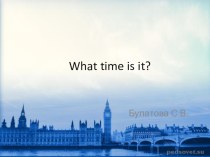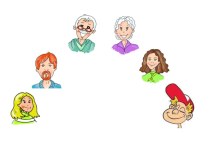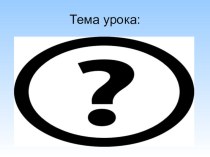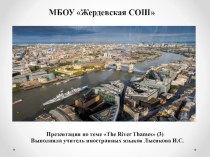- Главная
- Разное
- Бизнес и предпринимательство
- Образование
- Развлечения
- Государство
- Спорт
- Графика
- Культурология
- Еда и кулинария
- Лингвистика
- Религиоведение
- Черчение
- Физкультура
- ИЗО
- Психология
- Социология
- Английский язык
- Астрономия
- Алгебра
- Биология
- География
- Геометрия
- Детские презентации
- Информатика
- История
- Литература
- Маркетинг
- Математика
- Медицина
- Менеджмент
- Музыка
- МХК
- Немецкий язык
- ОБЖ
- Обществознание
- Окружающий мир
- Педагогика
- Русский язык
- Технология
- Физика
- Философия
- Химия
- Шаблоны, картинки для презентаций
- Экология
- Экономика
- Юриспруденция
Что такое findslide.org?
FindSlide.org - это сайт презентаций, докладов, шаблонов в формате PowerPoint.
Обратная связь
Email: Нажмите что бы посмотреть
Презентация на тему The United states of America. Соединенные Штаты Америки
Содержание
- 2. United States of America (USA) The United
- 3. Government and politics The United States Capitol, where Congress meets:
- 4. The United States is the world's oldest
- 5. Presidents of USA 1. George Washington 1732–1799
- 6. 5. James Monroe 1758–1831 (Lived: 73 years)
- 7. 8. Martin Van Buren 1782–1862 (Lived: 79
- 8. 14. Franklin Pierce 1804–1869 (Lived: 64 years)15.
- 9. 19. Rutherford B. Hayes 1822–1893 (Lived: 70
- 10. 30. Calvin Coolidge 1872–1933 (Lived: 60 years)
- 11. 31. Herbert Hoover 1874–1964 (Lived: 90 years)
- 12. 37. Richard Nixon 1913–1994 (Lived: 81 years)38.
- 13. 42. Bill Clinton Born 1946 (70 years
- 14. List of states
- 22. CaliforniaCalifornia is the most populous state, with 38,332,521
- 23. The sights of the USA There are
- 24. An internationally recognized symbol of San Francisco
- 25. Yellowstone National ParkGrand Canyon Niagara Falls
- 26. the Golden Gate Bridge. Las Vegas
- 27. Manhattan The White House
- 28. National Symbols Of United States Of America
- 29. National Flag of USA The current version
- 31. The Bald Eagle The Bald Eagle (haliaeetus leucocephalus) is
- 33. National Flower of USA Rose is the
- 35. National Tree of USA Oak Tree is
- 37. National Anthem of USA “The Star-Spangled Banner”
- 39. Great Seal The Great Seal of United
- 40. Скачать презентацию
- 41. Похожие презентации
United States of America (USA) The United States of America is a federal constitutional republic comprising fifty states and one federal district. The United States of America is also referred as United States, the USA, the

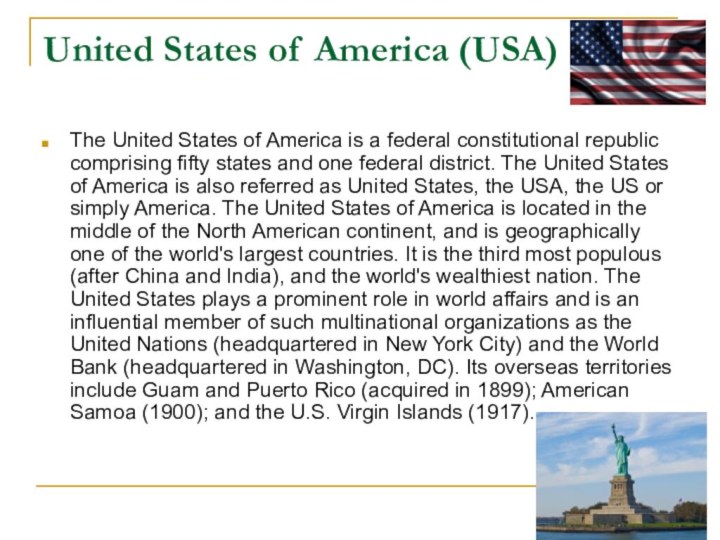
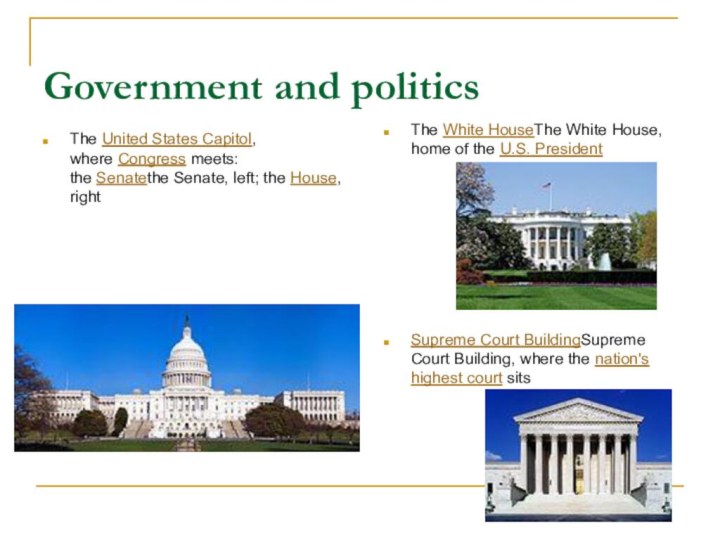
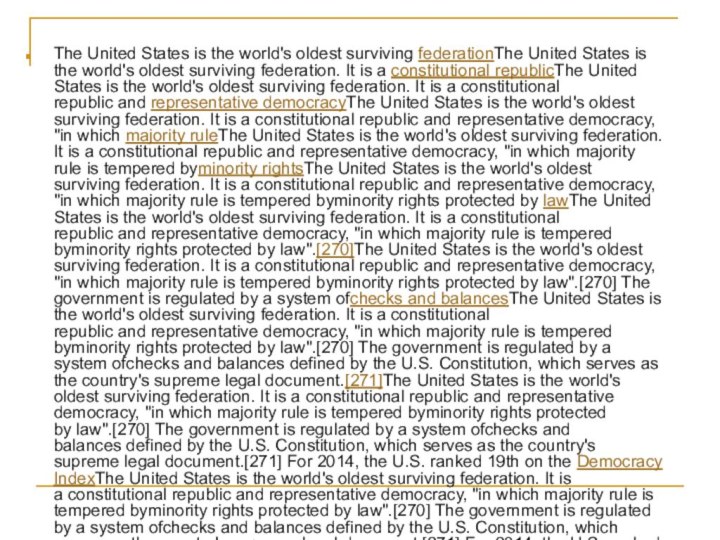
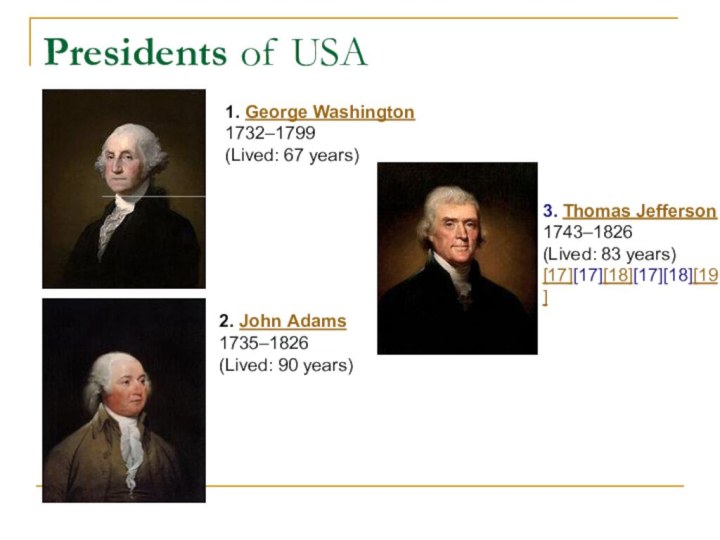
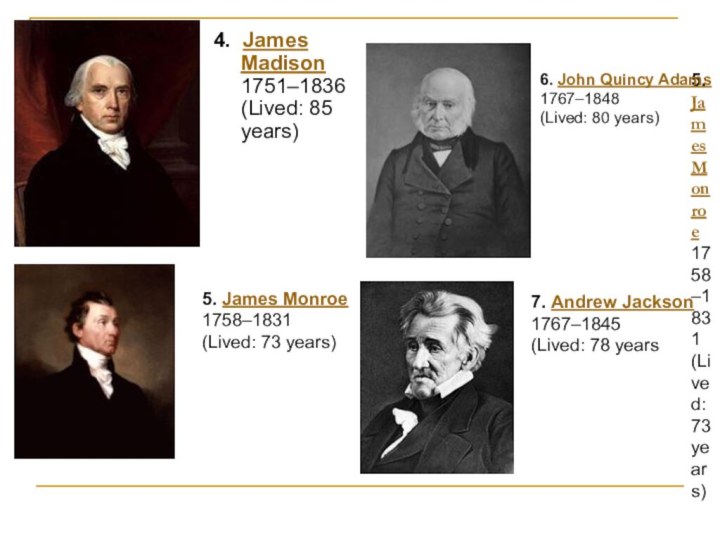


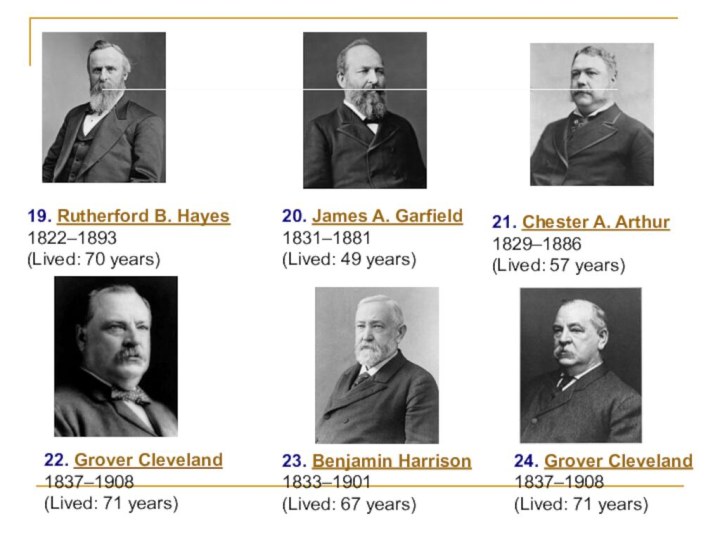
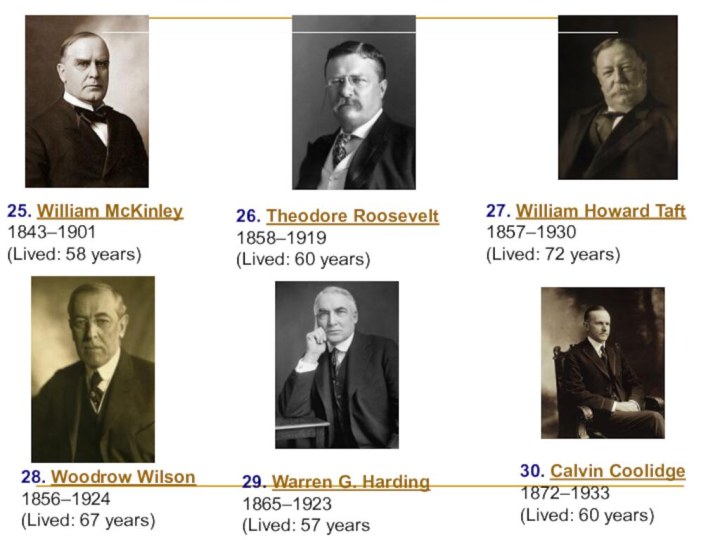
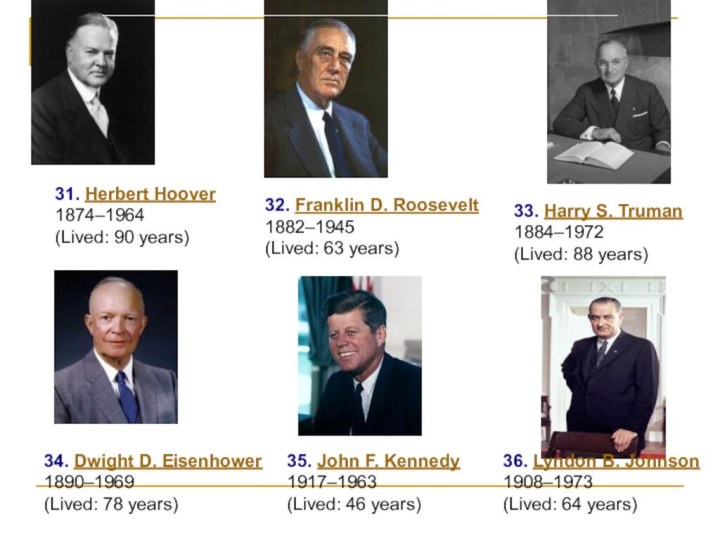



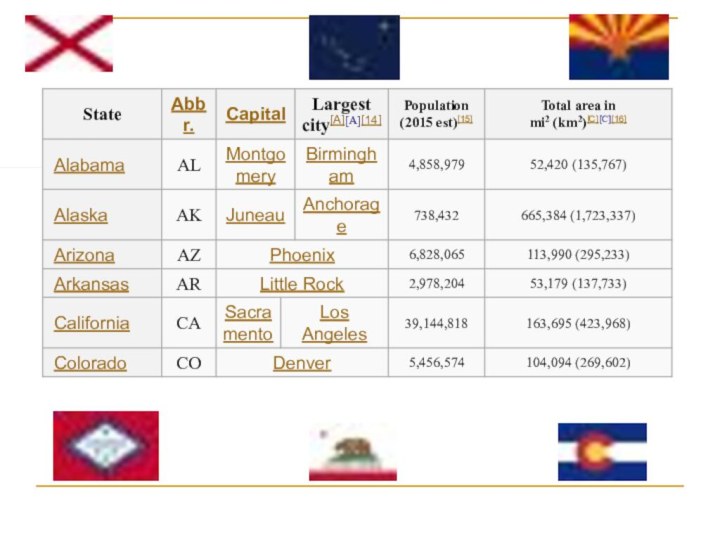


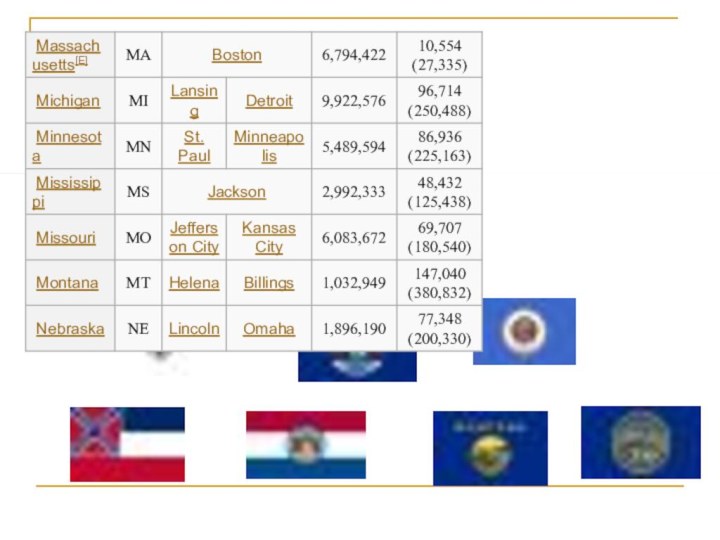
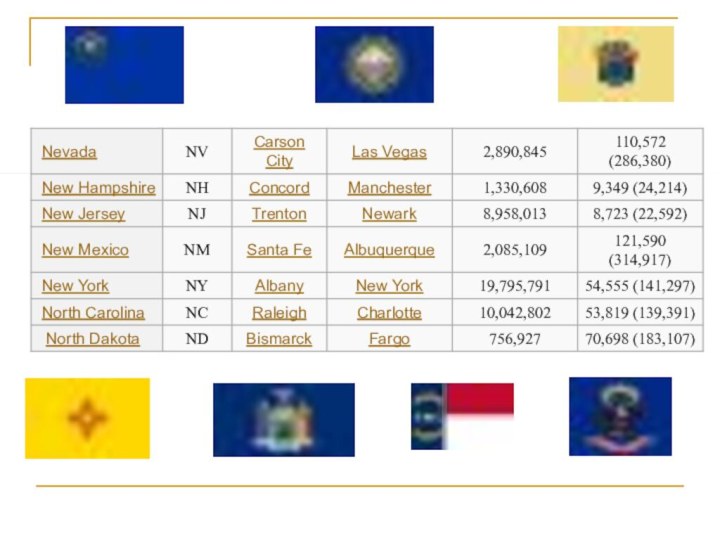
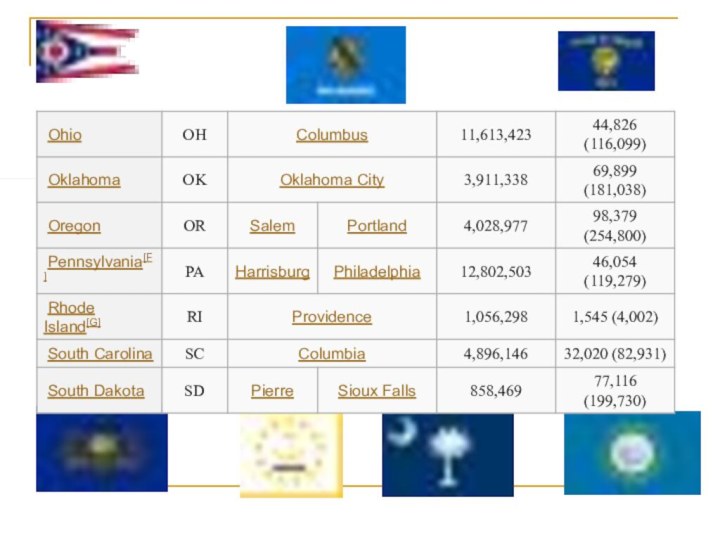

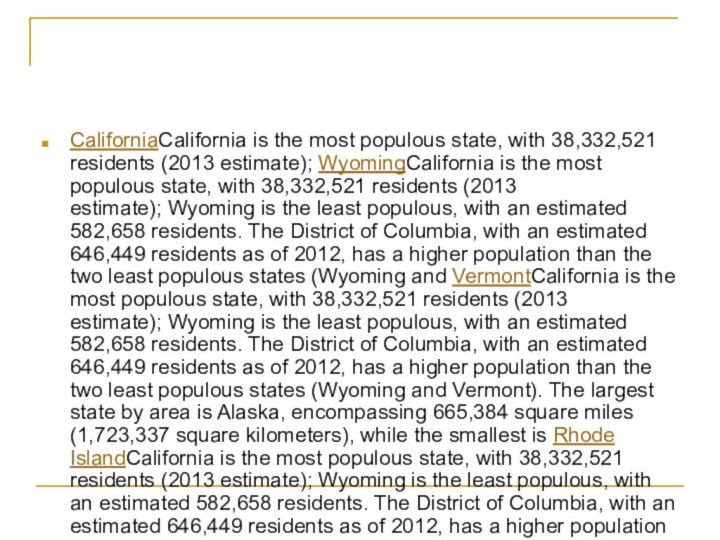

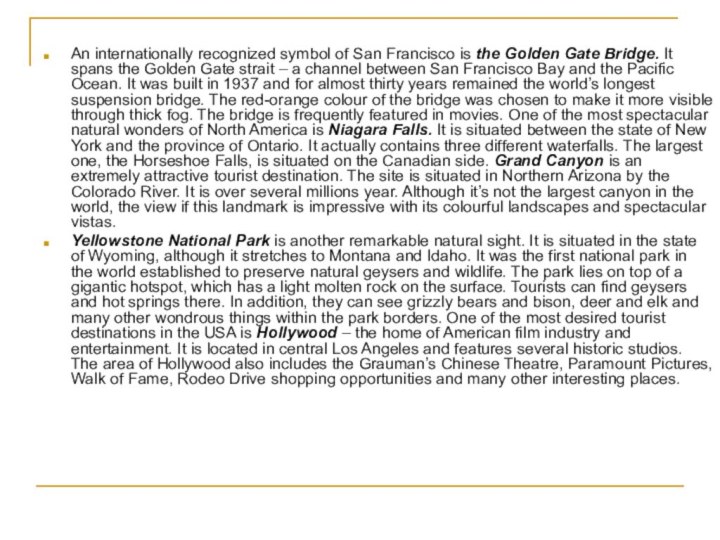
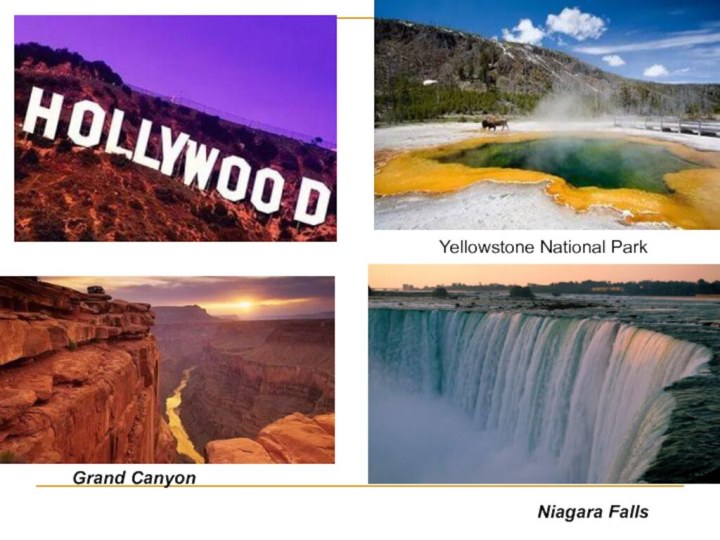

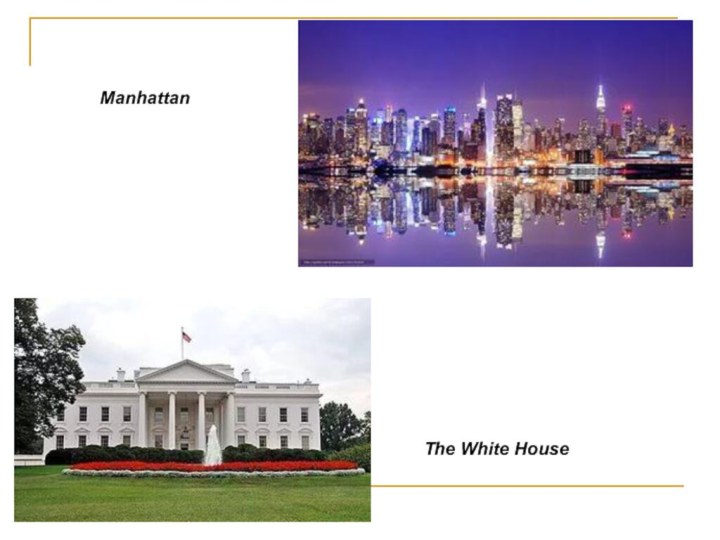
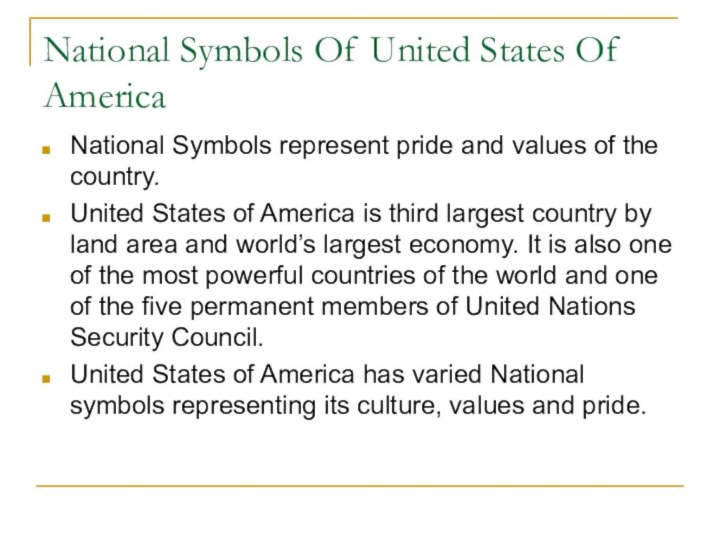


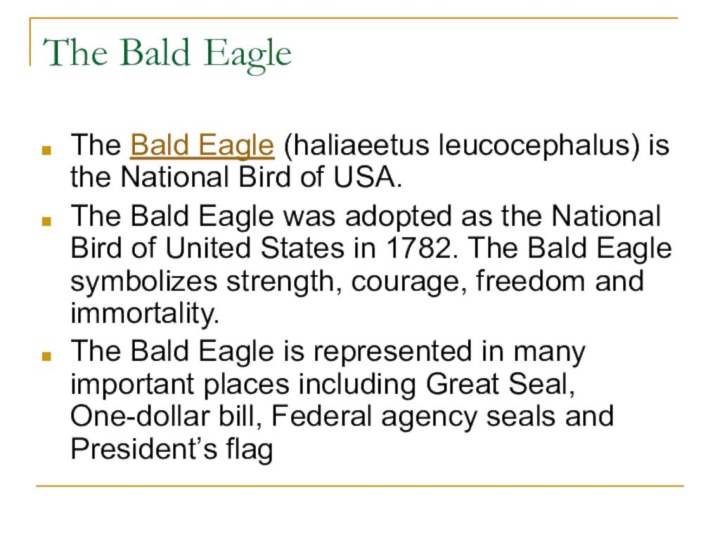

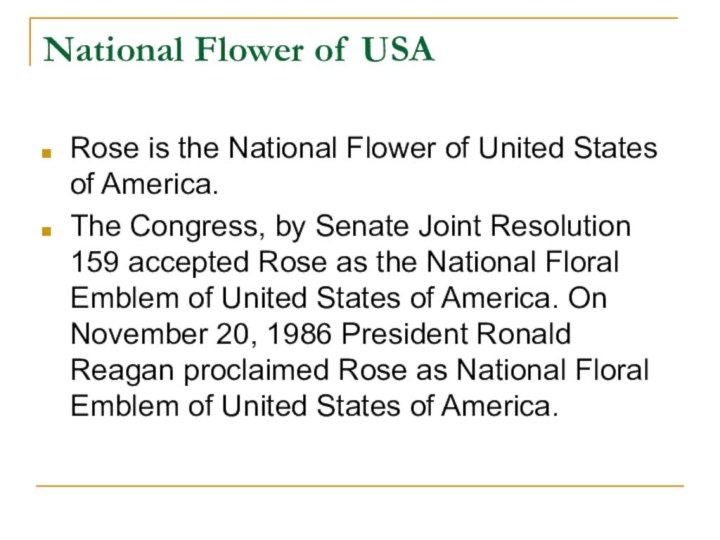






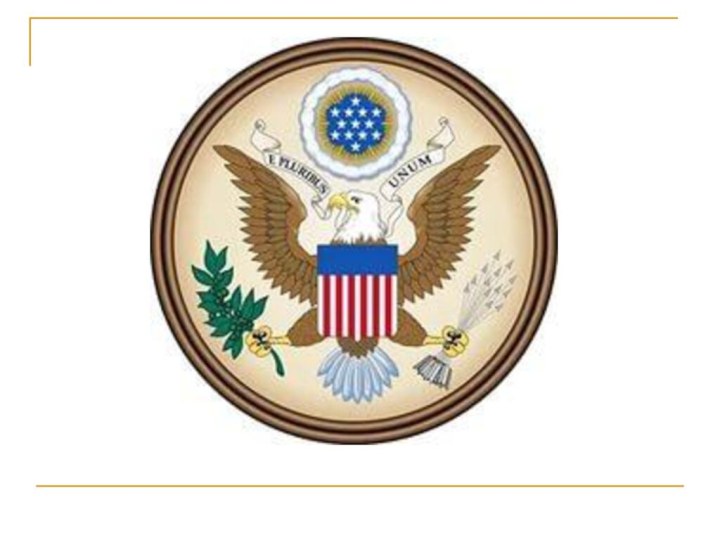
Слайд 3
Government and politics
The United States Capitol,
where Congress meets:
the Senatethe Senate, left; the House,
right
The White HouseThe White House, home of the U.S. President
Supreme Court BuildingSupreme
Court Building, where the nation's highest court sits
Слайд 4
The United States is the world's oldest surviving federationThe
United States is the world's oldest surviving federation. It is
a constitutional republicThe United States is the world's oldest surviving federation. It is a constitutional republic and representative democracyThe United States is the world's oldest surviving federation. It is a constitutional republic and representative democracy, "in which majority ruleThe United States is the world's oldest surviving federation. It is a constitutional republic and representative democracy, "in which majority rule is tempered byminority rightsThe United States is the world's oldest surviving federation. It is a constitutional republic and representative democracy, "in which majority rule is tempered byminority rights protected by lawThe United States is the world's oldest surviving federation. It is a constitutional republic and representative democracy, "in which majority rule is tempered byminority rights protected by law".[270]The United States is the world's oldest surviving federation. It is a constitutional republic and representative democracy, "in which majority rule is tempered byminority rights protected by law".[270] The government is regulated by a system ofchecks and balancesThe United States is the world's oldest surviving federation. It is a constitutional republic and representative democracy, "in which majority rule is tempered byminority rights protected by law".[270] The government is regulated by a system ofchecks and balances defined by the U.S. Constitution, which serves as the country's supreme legal document.[271]The United States is the world's oldest surviving federation. It is a constitutional republic and representative democracy, "in which majority rule is tempered byminority rights protected by law".[270] The government is regulated by a system ofchecks and balances defined by the U.S. Constitution, which serves as the country's supreme legal document.[271] For 2014, the U.S. ranked 19th on the Democracy IndexThe United States is the world's oldest surviving federation. It is a constitutional republic and representative democracy, "in which majority rule is tempered byminority rights protected by law".[270] The government is regulated by a system ofchecks and balances defined by the U.S. Constitution, which serves as the country's supreme legal document.[271] For 2014, the U.S. ranked 19th on the Democracy Index[272]The United States is the world's oldest surviving federation. It is a constitutional republic and representative democracy, "in which majority rule is tempered byminority rights protected by law".[270] The government is regulated by a system ofchecks and balances defined by the U.S. Constitution, which serves as the country's supreme legal document.[271] For 2014, the U.S. ranked 19th on the Democracy Index[272] and 17th on the Corruption Perceptions IndexThe United States is the world's oldest surviving federation. It is a constitutional republic and representative democracy, "in which majority rule is tempered byminority rights protected by law".[270] The government is regulated by a system ofchecks and balances defined by the U.S. Constitution, which serves as the country's supreme legal document.[271] For 2014, the U.S. ranked 19th on the Democracy Index[272] and 17th on the Corruption Perceptions Index.[273]In the American federalist systemIn the American federalist system, citizens are usually subject to three levels of governmentIn the American federalist system, citizens are usually subject to three levels of government: federal, state, and local. The local governmentIn the American federalist system, citizens are usually subject to three levels of government: federal, state, and local. The local government's duties are commonly split between countyIn the American federalist system, citizens are usually subject to three levels of government: federal, state, and local. The local government's duties are commonly split between county and municipal governmentsIn the American federalist system, citizens are usually subject to three levels of government: federal, state, and local. The local government's duties are commonly split between county and municipal governments. In almost all cases, executive and legislative officials are elected by a plurality voteIn the American federalist system, citizens are usually subject to three levels of government: federal, state, and local. The local government's duties are commonly split between county and municipal governments. In almost all cases, executive and legislative officials are elected by a plurality vote of citizens by district. There is no proportional representationIn the American federalist system, citizens are usually subject to three levels of government: federal, state, and local. The local government's duties are commonly split between county and municipal governments. In almost all cases, executive and legislative officials are elected by a plurality vote of citizens by district. There is no proportional representation at the federal level, and it is rare at lower levels.[274]
The federal government is composed of three branches:
LegislativeLegislative: The bicameralLegislative: The bicameral CongressLegislative: The bicameral Congress, made up of the SenateLegislative: The bicameral Congress, made up of the Senate and the House of RepresentativesLegislative: The bicameral Congress, made up of the Senate and the House of Representatives, makes federal lawLegislative: The bicameral Congress, made up of the Senate and the House of Representatives, makes federal law, declares warLegislative: The bicameral Congress, made up of the Senate and the House of Representatives, makes federal law, declares war, approves treaties, has the power of the purseLegislative: The bicameral Congress, made up of the Senate and the House of Representatives, makes federal law, declares war, approves treaties, has the power of the purse,[275]Legislative: The bicameral Congress, made up of the Senate and the House of Representatives, makes federal law, declares war, approves treaties, has the power of the purse,[275] and has the power of impeachmentLegislative: The bicameral Congress, made up of the Senate and the House of Representatives, makes federal law, declares war, approves treaties, has the power of the purse,[275] and has the power of impeachment, by which it can remove sitting members of the government.[276]
ExecutiveExecutive: The PresidentExecutive: The President is the commander-in-chiefExecutive: The President is the commander-in-chief of the military, can veto legislative billsExecutive: The President is the commander-in-chief of the military, can veto legislative bills before they become law (subject to Congressional override), and appoints themembers of the CabinetExecutive: The President is the commander-in-chief of the military, can veto legislative bills before they become law (subject to Congressional override), and appoints themembers of the Cabinet (subject to Senate approval) and other officers, who administer and enforce federal laws and policies.[277]
JudicialJudicial: The Supreme CourtJudicial: The Supreme Court and lower federal courtsJudicial: The Supreme Court and lower federal courts, whose judges are appointed by the President with Senate approval, interpret laws and overturn those they findunconstitutionalJudicial: The Supreme Court and lower federal courts, whose judges are appointed by the President with Senate approval, interpret laws and overturn those they findunconstitutional.[278]
Слайд 5
Presidents of USA
1. George Washington
1732–1799
(Lived: 67 years)
2.
John Adams
1735–1826
(Lived: 90 years)
3. Thomas Jefferson
1743–1826
(Lived: 83 years)
[17][17][18][17][18][19]
Слайд 6
5. James Monroe
1758–1831
(Lived: 73 years)
4. James Madison
1751–1836
(Lived: 85
years)
5. James Monroe
1758–1831
(Lived: 73 years)
6. John Quincy Adams
1767–1848
(Lived: 80
years) 7. Andrew Jackson
1767–1845
(Lived: 78 years
Слайд 7
8. Martin Van Buren
1782–1862
(Lived: 79 years)
9. William Henry
Harrison
1773–1841
(Lived: 68 years)
10. John Tyler
1790–1862
(Lived: 71 years)
1
11. James K.
Polk
1795–1849
(Lived: 53 years)
12. Zachary Taylor
1784–1850
(Lived: 65 years)
13. Millard Fillmore
1800–1874
(Lived: 74 years)
Слайд 8
14. Franklin Pierce
1804–1869
(Lived: 64 years)
15. James Buchanan
1791–1868
(Lived: 77
years)
16. Abraham Lincoln
1809–1865
(Lived: 56 years)
17. Andrew Johnson
1808–1875
(Lived: 66 years)
18.
Ulysses S. Grant
1822–1885
(Lived: 63 years)
Слайд 9
19. Rutherford B. Hayes
1822–1893
(Lived: 70 years)
20. James A.
Garfield
1831–1881
(Lived: 49 years)
21. Chester A. Arthur
1829–1886
(Lived: 57 years)
22. Grover
Cleveland
1837–1908
(Lived: 71 years)23. Benjamin Harrison
1833–1901
(Lived: 67 years)
24. Grover Cleveland
1837–1908
(Lived: 71 years)
Слайд 10
30. Calvin Coolidge
1872–1933
(Lived: 60 years)
29. Warren G. Harding
1865–1923
(Lived:
57 years
28. Woodrow Wilson
1856–1924
(Lived: 67 years)
27. William Howard Taft
1857–1930
(Lived:
72 years)26. Theodore Roosevelt
1858–1919
(Lived: 60 years)
25. William McKinley
1843–1901
(Lived: 58 years)
Слайд 11
31. Herbert Hoover
1874–1964
(Lived: 90 years)
32. Franklin D. Roosevelt
1882–1945
(Lived:
63 years)
33. Harry S. Truman
1884–1972
(Lived: 88 years)
34. Dwight D.
Eisenhower
1890–1969
(Lived: 78 years)
35. John F. Kennedy
1917–1963
(Lived: 46 years)
36. Lyndon B. Johnson
1908–1973
(Lived: 64 years)
Слайд 12
37. Richard Nixon
1913–1994
(Lived: 81 years)
38. Gerald Ford
1913–2006
(Lived: 93
years)
39. Jimmy Carter
Born 1924
(91 years old)
40. Ronald Reagan
1911–2004
(Lived: 93
years)
41. George H. W. Bush
Born 1924
(92 years old)
Слайд 13
42. Bill Clinton
Born 1946
(70 years old)
43. George W.
Bush
Born 1946
(70 years old)
44. Barack Obama
Born 1961
(55 years old)
Слайд 22 CaliforniaCalifornia is the most populous state, with 38,332,521 residents
(2013 estimate); WyomingCalifornia is the most populous state, with 38,332,521 residents
(2013 estimate); Wyoming is the least populous, with an estimated 582,658 residents. The District of Columbia, with an estimated 646,449 residents as of 2012, has a higher population than the two least populous states (Wyoming and VermontCalifornia is the most populous state, with 38,332,521 residents (2013 estimate); Wyoming is the least populous, with an estimated 582,658 residents. The District of Columbia, with an estimated 646,449 residents as of 2012, has a higher population than the two least populous states (Wyoming and Vermont). The largest state by area is Alaska, encompassing 665,384 square miles (1,723,337 square kilometers), while the smallest is Rhode IslandCalifornia is the most populous state, with 38,332,521 residents (2013 estimate); Wyoming is the least populous, with an estimated 582,658 residents. The District of Columbia, with an estimated 646,449 residents as of 2012, has a higher population than the two least populous states (Wyoming and Vermont). The largest state by area is Alaska, encompassing 665,384 square miles (1,723,337 square kilometers), while the smallest is Rhode Island, encompassing 1,545 square miles (4,002 square kilometers). The first state to ratify the current Constitution was DelawareCalifornia is the most populous state, with 38,332,521 residents (2013 estimate); Wyoming is the least populous, with an estimated 582,658 residents. The District of Columbia, with an estimated 646,449 residents as of 2012, has a higher population than the two least populous states (Wyoming and Vermont). The largest state by area is Alaska, encompassing 665,384 square miles (1,723,337 square kilometers), while the smallest is Rhode Island, encompassing 1,545 square miles (4,002 square kilometers). The first state to ratify the current Constitution was Delaware, which it did on December 7, 1787, while the newest state is Hawaii, which was admitted to the Union on August 21, 1959. The largest territory in terms of both population and size is Puerto Rico, with 3,725,789 residents as of the 2010 Census and a total area of 5,325 square miles (13,792 square kilometers).
Слайд 23
The sights of the USA
There are a
number of places which tourists want to visit arriving
in the USA. This list includes the White House, Manhattan, Las Vegas, Golden Gate Bridge, Niagara Falls, Grand Canyon, Yellowstone National Park, and of course Hollywood. The White House is situated in the capital of the USA. Since its foundation it has served as the official residence of the President. The building was first used by John Adams. Manhattan is the place which people picture thinking of New York. It is one of its five boroughs with plenty of skyscrapers. The image of Manhattan has been featured thousands times on screen. The sights of the area include Times Square, Broadway Theatre, Rockefeller University, New York City Hall, etc. Manhattan is also one of the most expensive places to live and to shop.Las Vegas is the gambling mecca of the world. This resort city is the leading financial and cultural center of southern Nevada. Casinos and mega-casino hotels with lavish decorations can be found throughout the city. All in all, the city is built to create a fantasy-like atmosphere.Слайд 24 An internationally recognized symbol of San Francisco is the
Golden Gate Bridge. It spans the Golden Gate strait –
a channel between San Francisco Bay and the Pacific Ocean. It was built in 1937 and for almost thirty years remained the world’s longest suspension bridge. The red-orange colour of the bridge was chosen to make it more visible through thick fog. The bridge is frequently featured in movies. One of the most spectacular natural wonders of North America is Niagara Falls. It is situated between the state of New York and the province of Ontario. It actually contains three different waterfalls. The largest one, the Horseshoe Falls, is situated on the Canadian side. Grand Canyon is an extremely attractive tourist destination. The site is situated in Northern Arizona by the Colorado River. It is over several millions year. Although it’s not the largest canyon in the world, the view if this landmark is impressive with its colourful landscapes and spectacular vistas.Yellowstone National Park is another remarkable natural sight. It is situated in the state of Wyoming, although it stretches to Montana and Idaho. It was the first national park in the world established to preserve natural geysers and wildlife. The park lies on top of a gigantic hotspot, which has a light molten rock on the surface. Tourists can find geysers and hot springs there. In addition, they can see grizzly bears and bison, deer and elk and many other wondrous things within the park borders. One of the most desired tourist destinations in the USA is Hollywood – the home of American film industry and entertainment. It is located in central Los Angeles and features several historic studios. The area of Hollywood also includes the Grauman’s Chinese Theatre, Paramount Pictures, Walk of Fame, Rodeo Drive shopping opportunities and many other interesting places.
Слайд 28
National Symbols Of United States Of America
National Symbols
represent pride and values of the country.
United States of
America is third largest country by land area and world’s largest economy. It is also one of the most powerful countries of the world and one of the five permanent members of United Nations Security Council.United States of America has varied National symbols representing its culture, values and pride.
Слайд 29
National Flag of USA
The current version of National
Flag of USA was adopted on July 4, 1960.
The
National Flag of USA has thirteen equal horizontal stripes with alternate colours red and white. It has a blue rectangle in the top left corner of the flag with 50 white pointed five-stars arranged in nine horizontal rows. The stars are six and five in numbers alternately and 50 in number representing different states.A book “Our Flag” published in 1989 by House of Representatives explains the significance of colors and stars as:-
"The colors of the pales (the vertical stripes) are those used in the flag of the United States of America; White signifies purity and innocence, Red, hardiness & valour, and Blue, the color of the Chief (the broad band above the stripes) signifies vigilance, perseverance & justice."
"The star is a symbol of the heavens and the divine goal to which man has aspired from time immemorial; the stripe is symbolic of the rays of light emanating from the sun."
Слайд 31
The Bald Eagle
The Bald Eagle (haliaeetus leucocephalus) is the
National Bird of USA.
The Bald Eagle was adopted as
the National Bird of United States in 1782. The Bald Eagle symbolizes strength, courage, freedom and immortality.The Bald Eagle is represented in many important places including Great Seal, One-dollar bill, Federal agency seals and President’s flag
Слайд 33
National Flower of USA
Rose is the National Flower
of United States of America.
The Congress, by Senate Joint
Resolution 159 accepted Rose as the National Floral Emblem of United States of America. On November 20, 1986 President Ronald Reagan proclaimed Rose as National Floral Emblem of United States of America.
Слайд 35
National Tree of USA
Oak Tree is the National
Tree of United States of America.
Oak Tree was adopted
as the National Tree of United States in November 2004.
Слайд 37
National Anthem of USA
“The Star-Spangled Banner” is the
National Anthem of United States of America.
The lyrics of
the National Anthem are taken from “Defence of Fort McHenry”, a poem written by Francis Scott Key in 1914 and music is given by John Stafford Smith. “The Star-Spangled Banner” was adopted as the National Anthem on Mar 3, 1931.National Anthem
Слайд 39
Great Seal
The Great Seal of United States of
America was adopted in June 20,1782.
The Great Seal is
used for various documents, treaties, commissions, United States passports, military insignia, embassy placards and many other places.The centre of the Seal has Bald Eagle (National Bird), in the beak of the bird is a scroll with “E pluribus unum” inscribed meaning “out of many, one”. The two claws of Eagle holds a bundle of olive branch and thirteen arrows respectively. The front of the Eagle contains a shield of red and white stripes. Above the Eagle is cloud with blue field having thirteen stars in it.
The reverse of thee Seal contains 13 step Pyramid with 1776 inscribed (in Roman Numerals). Below the Pyramid is a scroll “Novus Ordo Seclorum” meaning “New Order of the Ages”. Above the Pyramid is the Eye of Providence and motto “Annuit Coeptis”.





